3 Simple Self-Stretching for Chronic Lower Back Pain
I’d like to share some simple self-stretching techniques for chronic lower back pain, one of the most common and frustrating issues affecting people of all ages, from...

February 24, 2025
Hi, it’s Satoru from hariQ acupuncture & herbs. In this blog, I would like to explain how to manage your foot neuropathy at home. This type of the neuropathy that I’m going to explain is sensory neuropathy on the feet. The most common symptoms are numbness, tingling (pins and needles), cold and wet feeling on the bottom of the foot that you can’t feel normal.
It is very annoying and unbearable that you don’t want just to leave it alone. It’s important to manage neuropathy symptoms effectively to maintain a good quality of life. There are 4 steps that you can do by yourself to reduce the tingling and numbness and increase the sensation of your feet.
We understand this can be a lot of information and overwhelming: if you are looking for more support and answers, set up a free consultation with our neuropathy Specialist, Satoru Ozawa. Share your story, get your questions answered, and learn how you can set yourself up for tremendous success in achieving a healthy life.
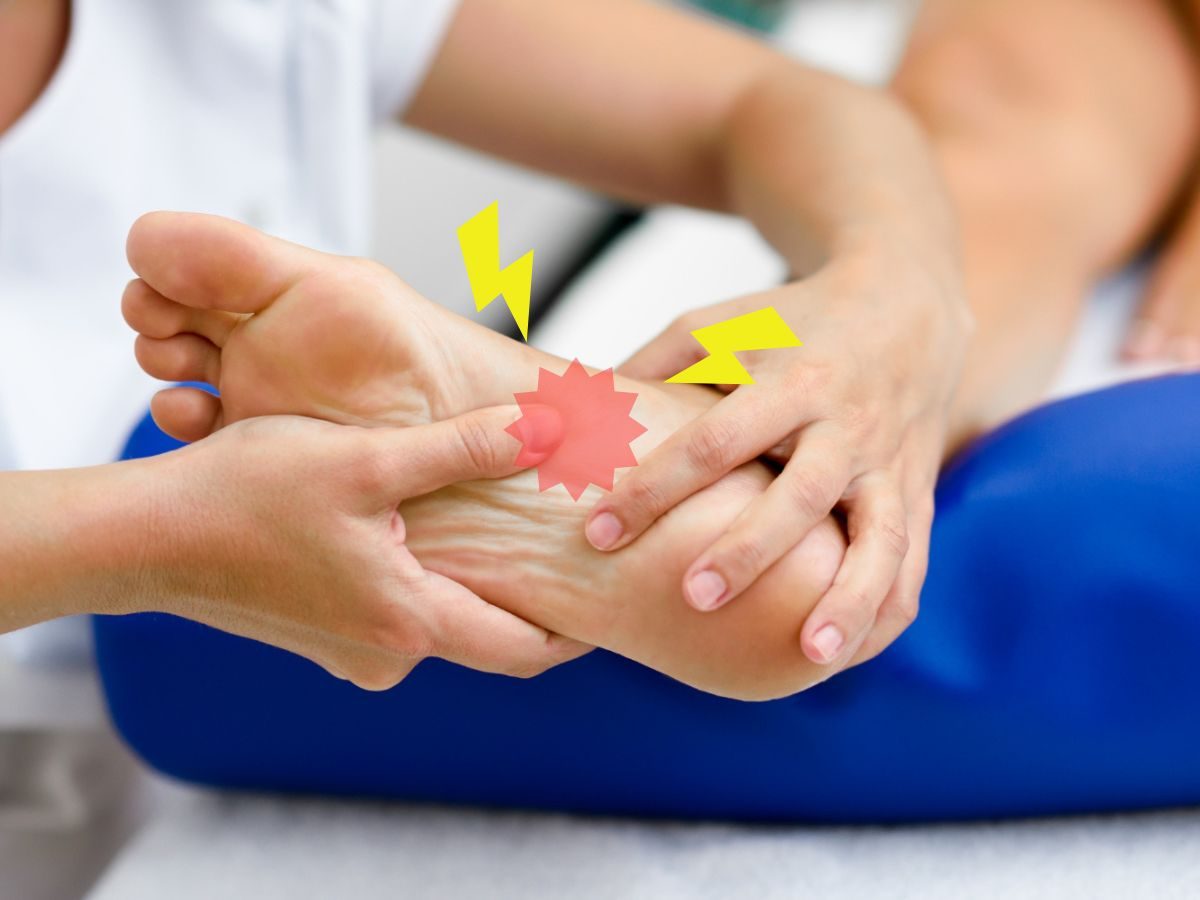
Neuropathy is a condition that occurs when peripheral nerves, which are responsible for sending signals from the brain and spinal cord to the rest of the body, are damaged. This can result in a variety of symptoms, including numbness, tingling, prickling, burning, and a loss of sensation in the affected areas. Neuropathy can be caused by a number of factors, including diabetes, traumatic injuries, infections, and exposure to toxins.
There are many risk factors that can cause neuropathy in the feet, but I will just explain the four major ones. Neuropathy can be caused by various factors such as diabetes, traumatic injuries, infections, and exposure to toxins.
Diabetes is one of the most common causes of neuropathy. This is because high blood sugar levels can damage the blood vessels, especially the capillaries, which are tiny vessels found mainly around the eyes, toes, and fingertips. These vessels are usually the first to be affected, and one of the initial signs could be numbness and tingling.
When you injure your feet or lower spine, the nerve signals may not be sent due to the damage. It’s similar to wires being cut or damaged in a computer. This can particularly affect the nerves in the Lumber 5, Sacral 1, and Sacral 2 regions, which control the skin sensation on the bottom of the feet according to the dermatome theory.
Infections, especially bacterial and viral infections, can also cause neuropathy. Viruses are widespread, and when your immune system is weakened or you are exposed to a viral environment, you may experience neuropathy, resulting in numbness and tingling in your feet. Some infections that can lead to neuropathy include Lyme disease, shingles, Hepatitis B and C, leprosy, diphtheria, and even HIV.
Exposure to toxins, such as alcohol or drugs, can harm the peripheral nerves and capillary vessels, resulting in numbness and tingling in the feet. Chemicals like heavy metals, lead, and mercury can affect either the axon part of the nerves, which is responsible for sending signals, or the myelin part, which speeds up nerve signals. This can also result in poor absorption of essential vitamins, which are crucial for nerve generation.
Now, I will demonstrate how to manage or improve foot sensation at home with 4 simple steps. Start these exercises and benefit from them.
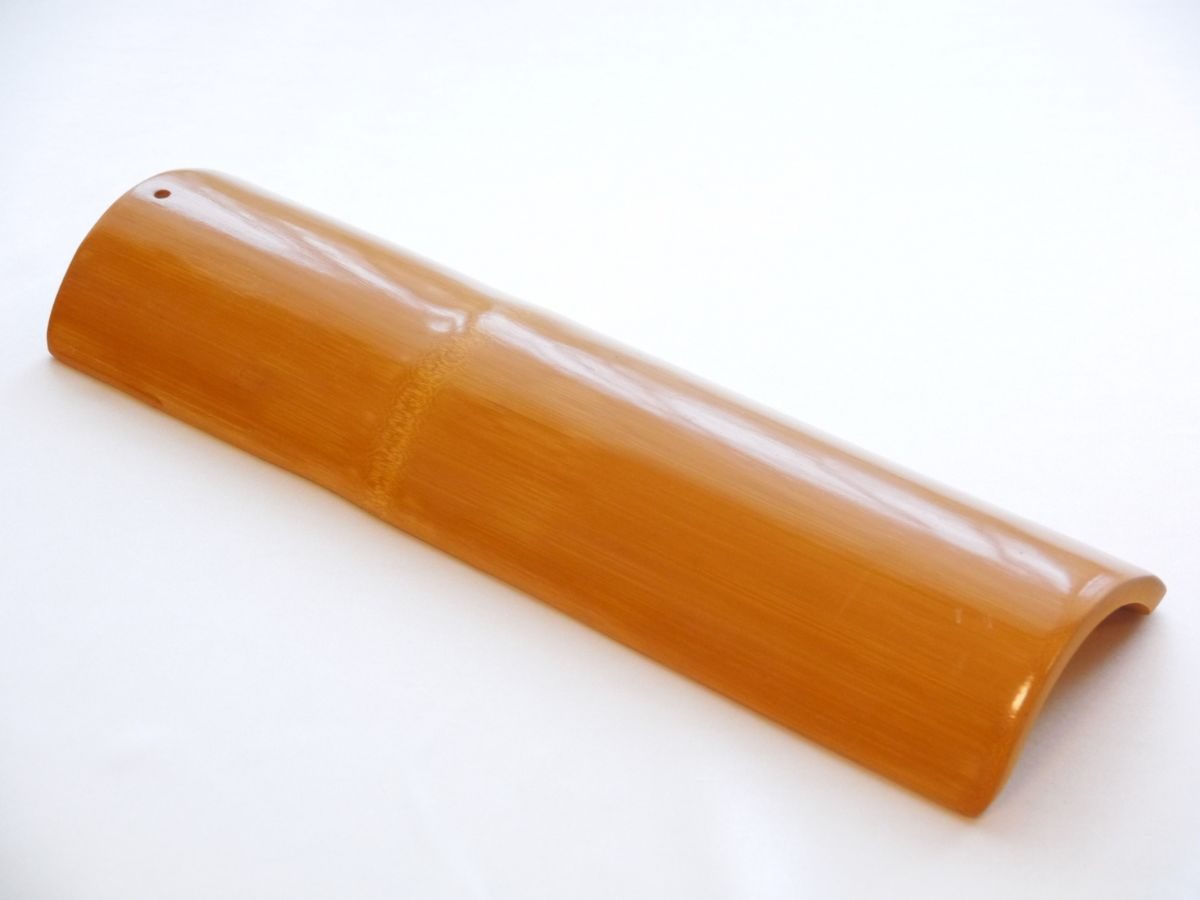

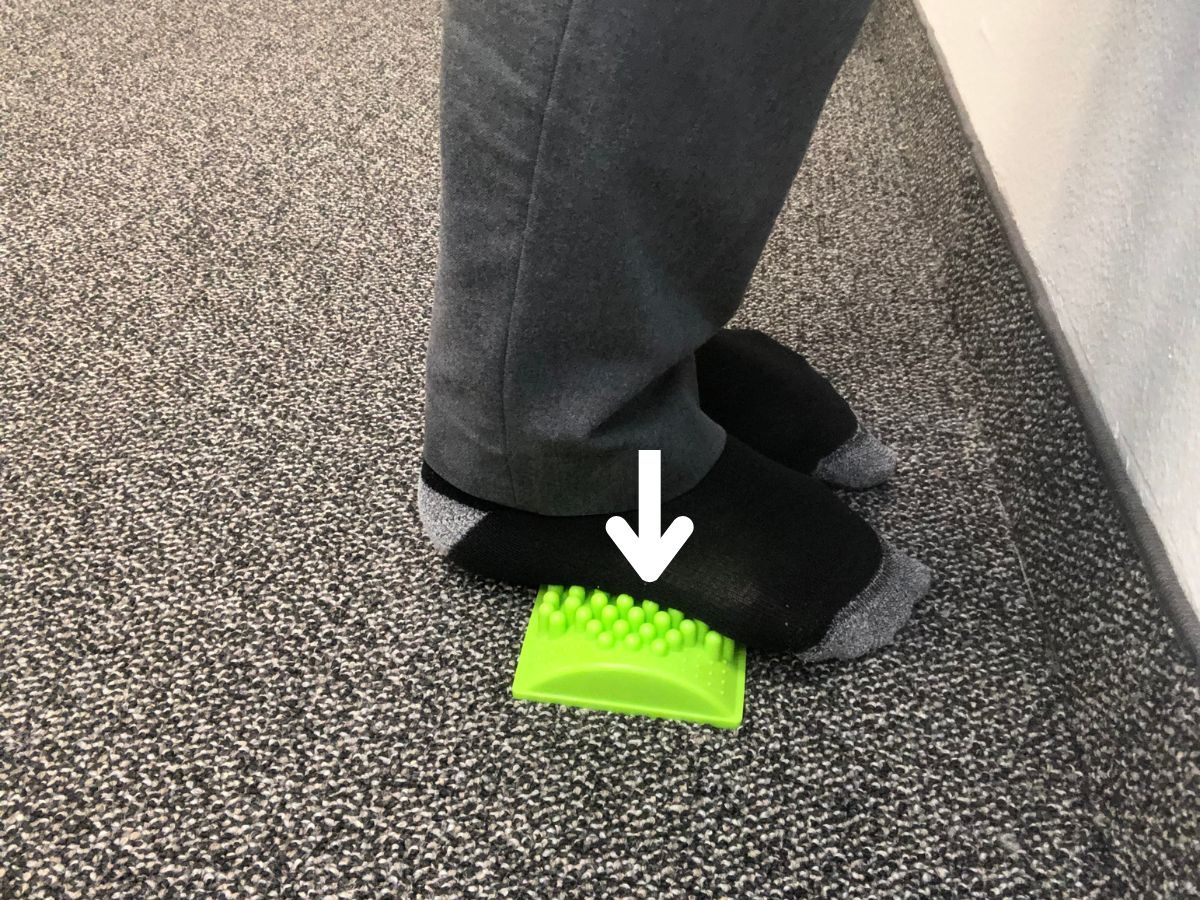
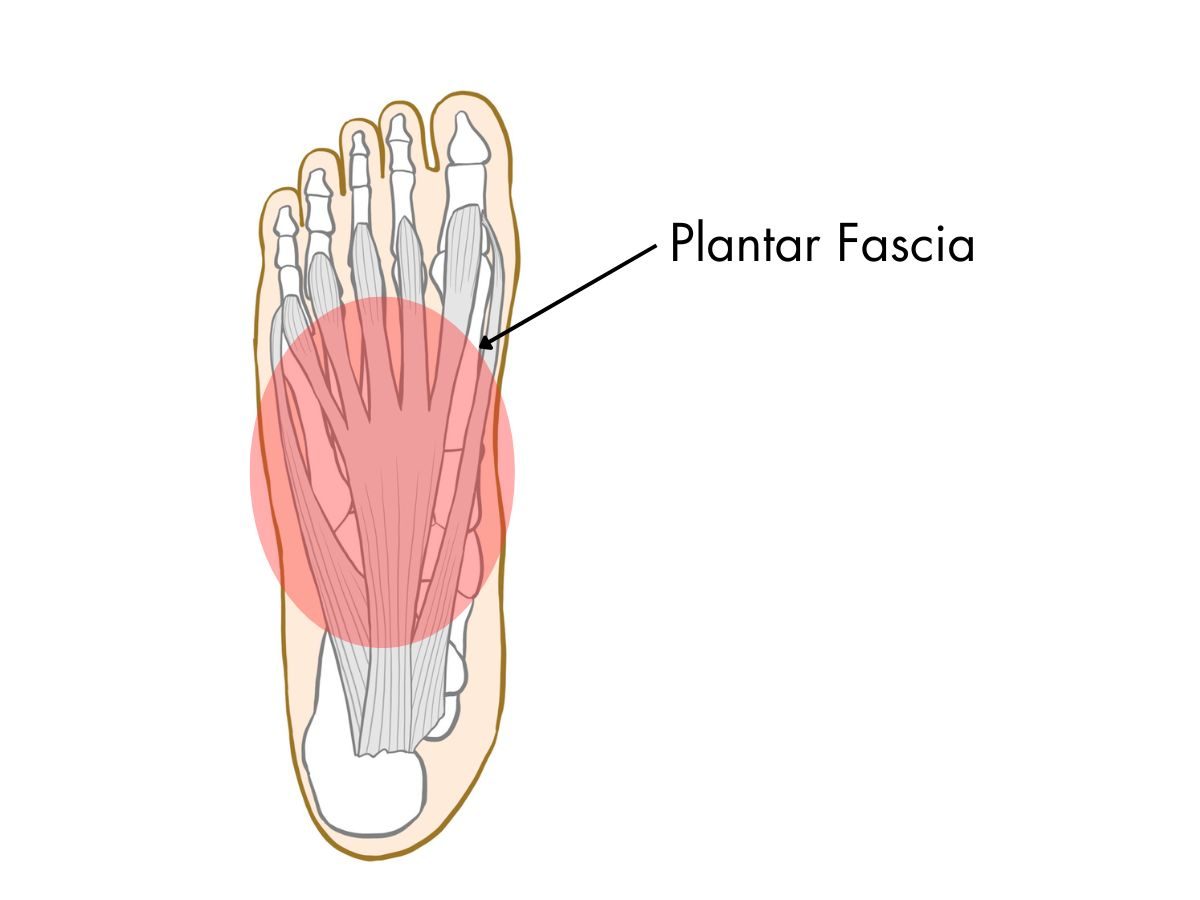
The first step is to step a bamboo stepper, also called Kakefumi in Japanese. The Takefumi stepper is a traditional oriental tool to regulate your feet’ circulation, stretch your plantar fascia, smooth your tissue, and return the sensation of the bottom of the foot.
You can purchase it from Amazon.com or an Asian grocery store such as H Mart, Mitsuwa, Marukai, Mizuwa, etc. It costs reasonable priced. Simply place it on a hard floor and step on it for about 5 minutes. Initially, you may feel sore and find it difficult to even stand up on it. If it’s too uncomfortable, take a break every 30-second. As you get used to it and feel less discomfort, gradually increase the stepping time.
The area of focus is the arch of the foot. Medial and lateral plantar nerves pass through the arch, which is called the plantar fascia. Apply constant pressure to soften the fascia and tissue, promoting increased blood flow to stimulate and regenerate nerves.
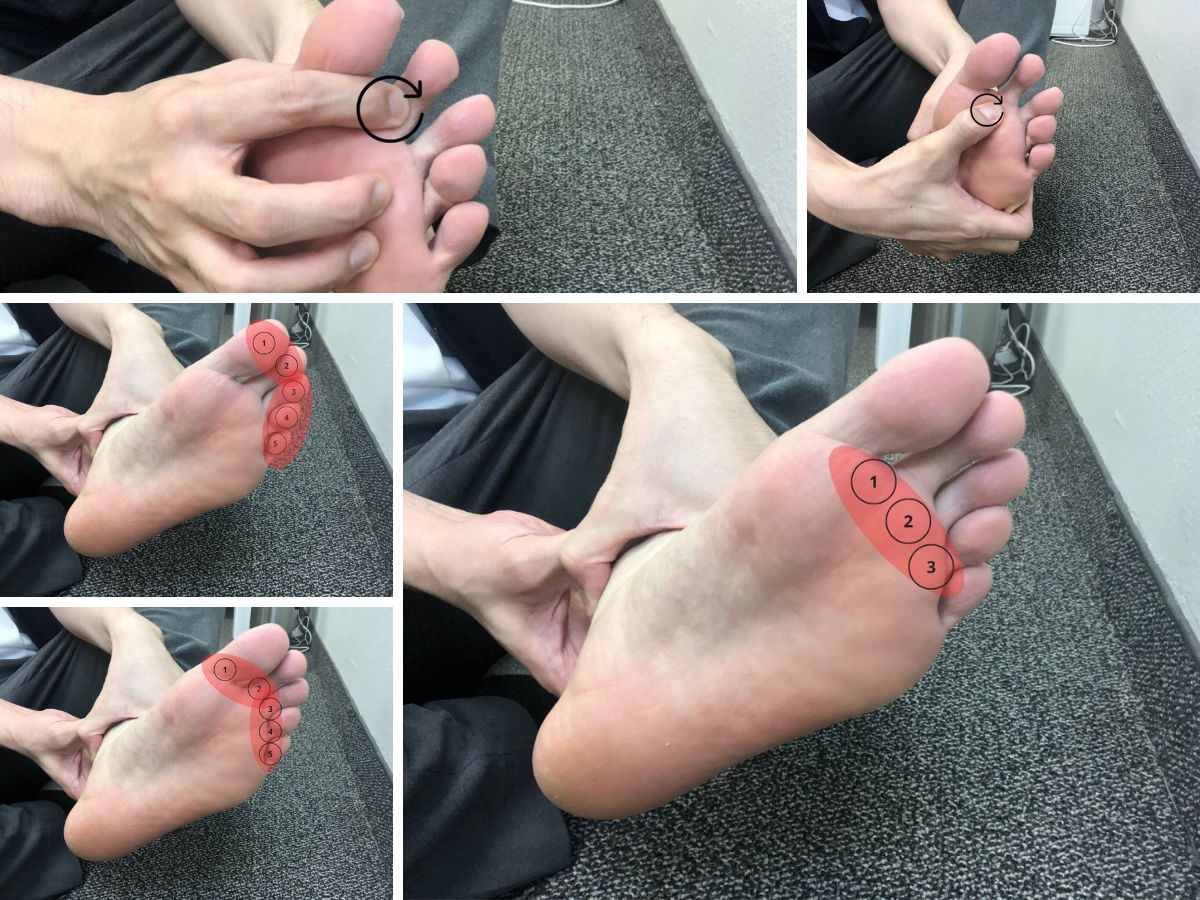

Certain pressure points can be massaged to increase blood circulation and improve the sensation of your foot. I want you to focus on massage three different parts: the first is between the base of the toes and metatarsal bones, the second is between the metatarsal bones, and the last is on the toes.


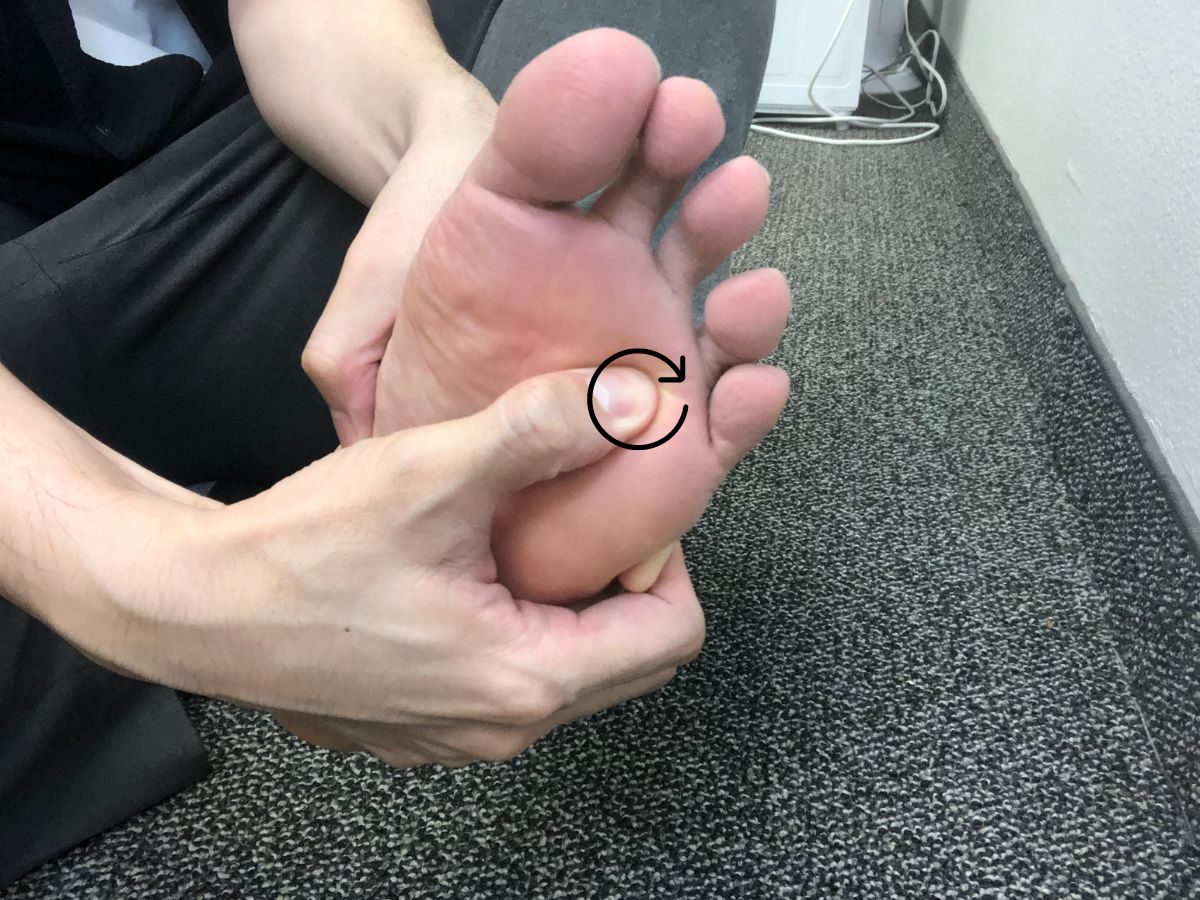
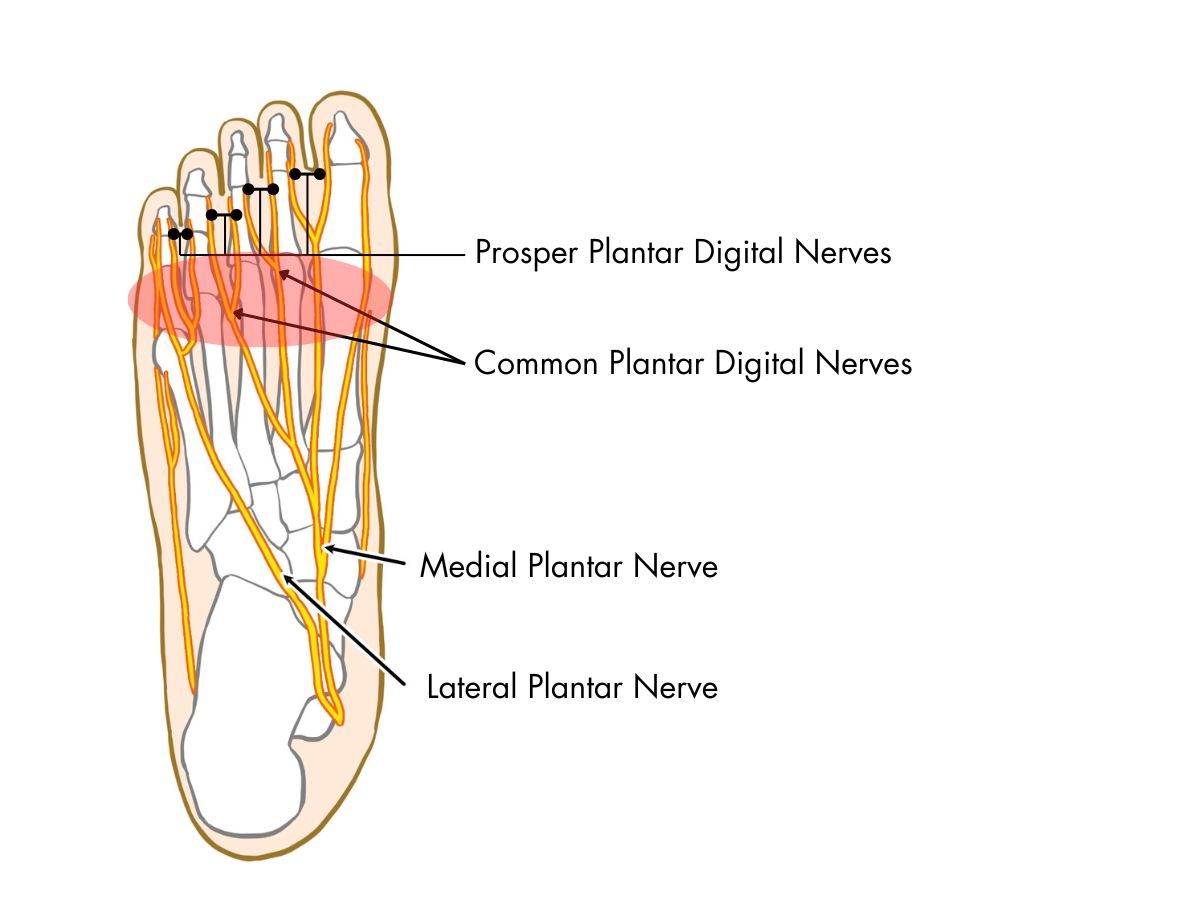
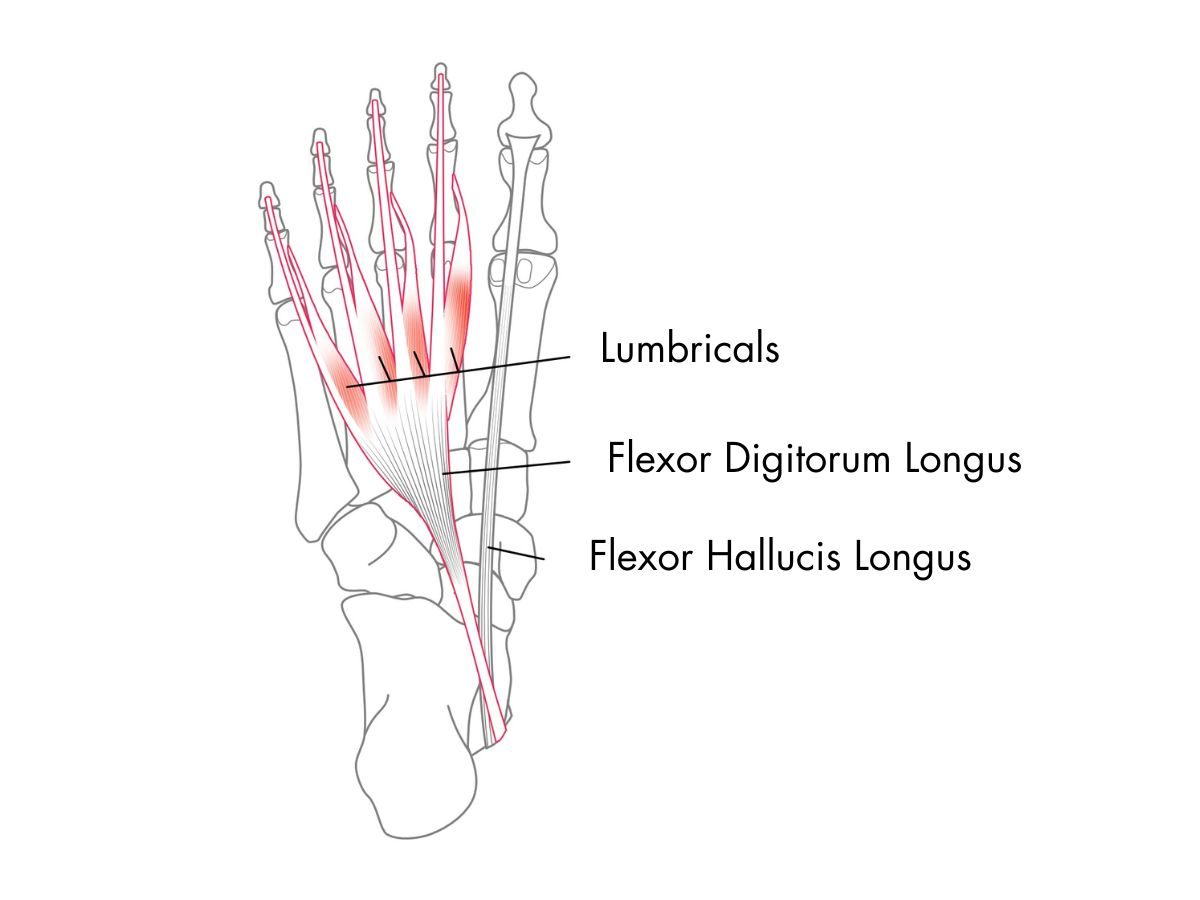
This is the common area where tender spots occur when you have neuropathy. Anatomically, you are stimulating lumbrical muscles and common plantar digital nerves. Those 3 points are at the metatarsal bone, at the crease on the toes. Use your thumb to press and move the circular motion each spot for 10 seconds.


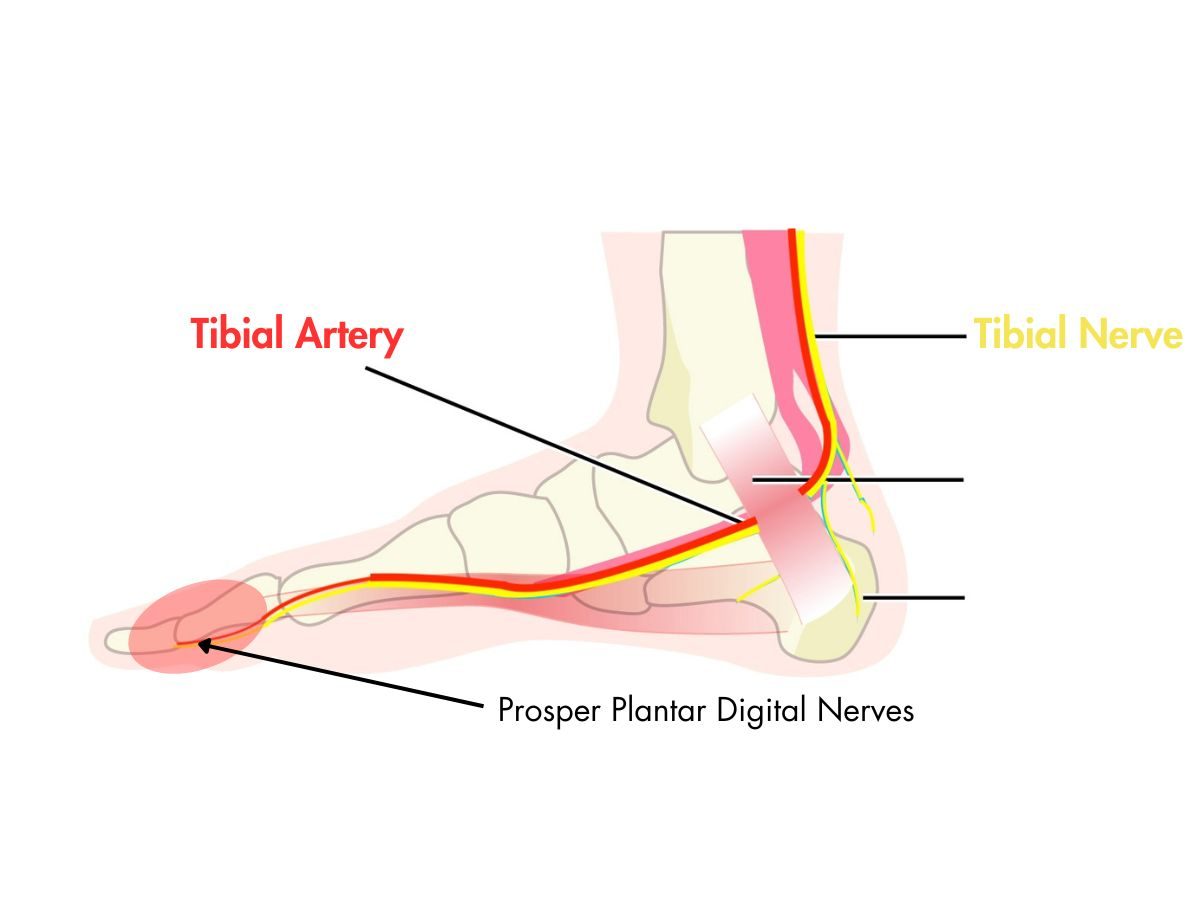
This is the spot on the metatarsophalangeal bone between your toes. When you massage this area, you’re stimulating the Prosper Plantar Digital Nerves that connect to each toe. It’s very important to give this area stimulate because the tiny nerves and blood vessels here make it easy to experience numbness and tingling from neuropathy. There are 5 points to focus on – simply rub each spot in a circular motion for 10 seconds.

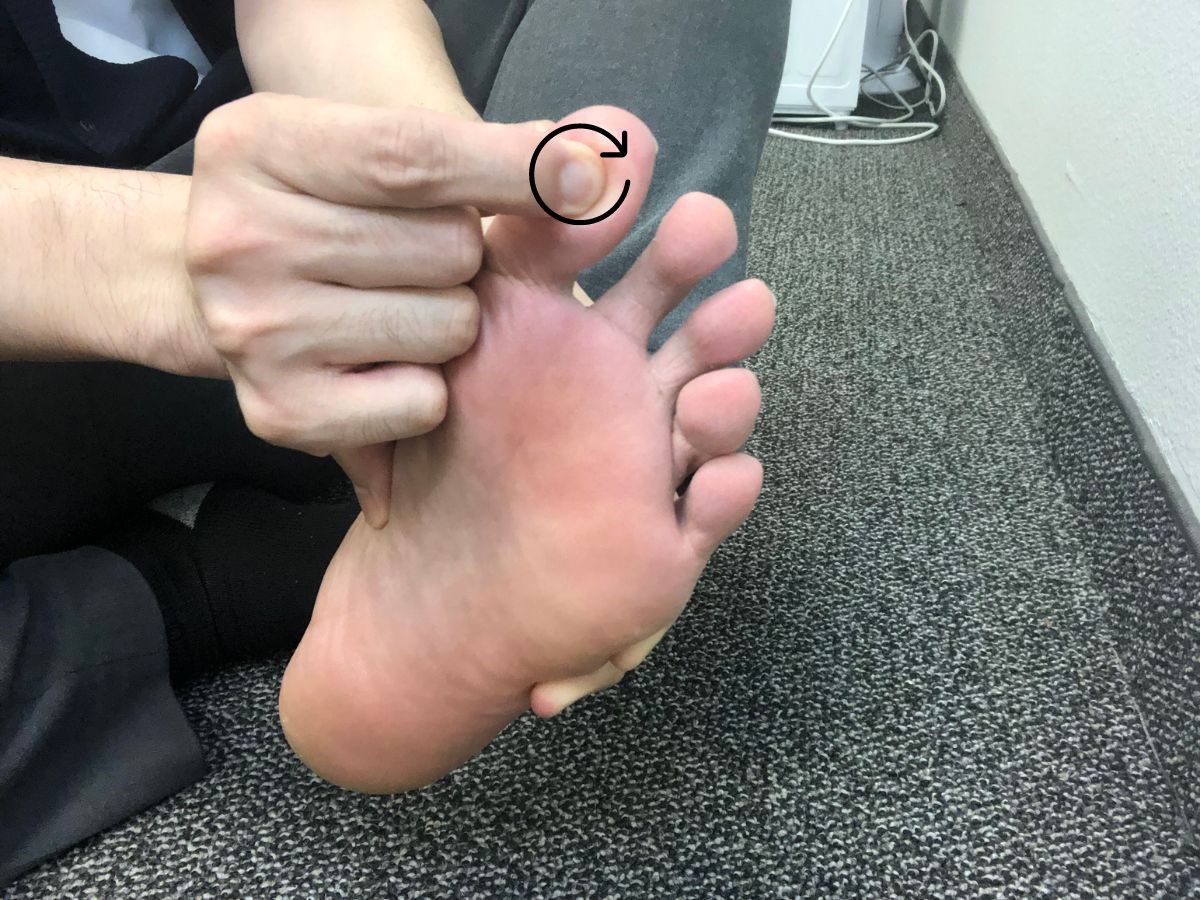
This is the area on each toe tip. Again, these are also the common tender spots for foot neuropathy, and it is very important to stimulate them to increase blood circulation. There are five points. Rub in a circular motion for 10 seconds on each spot.
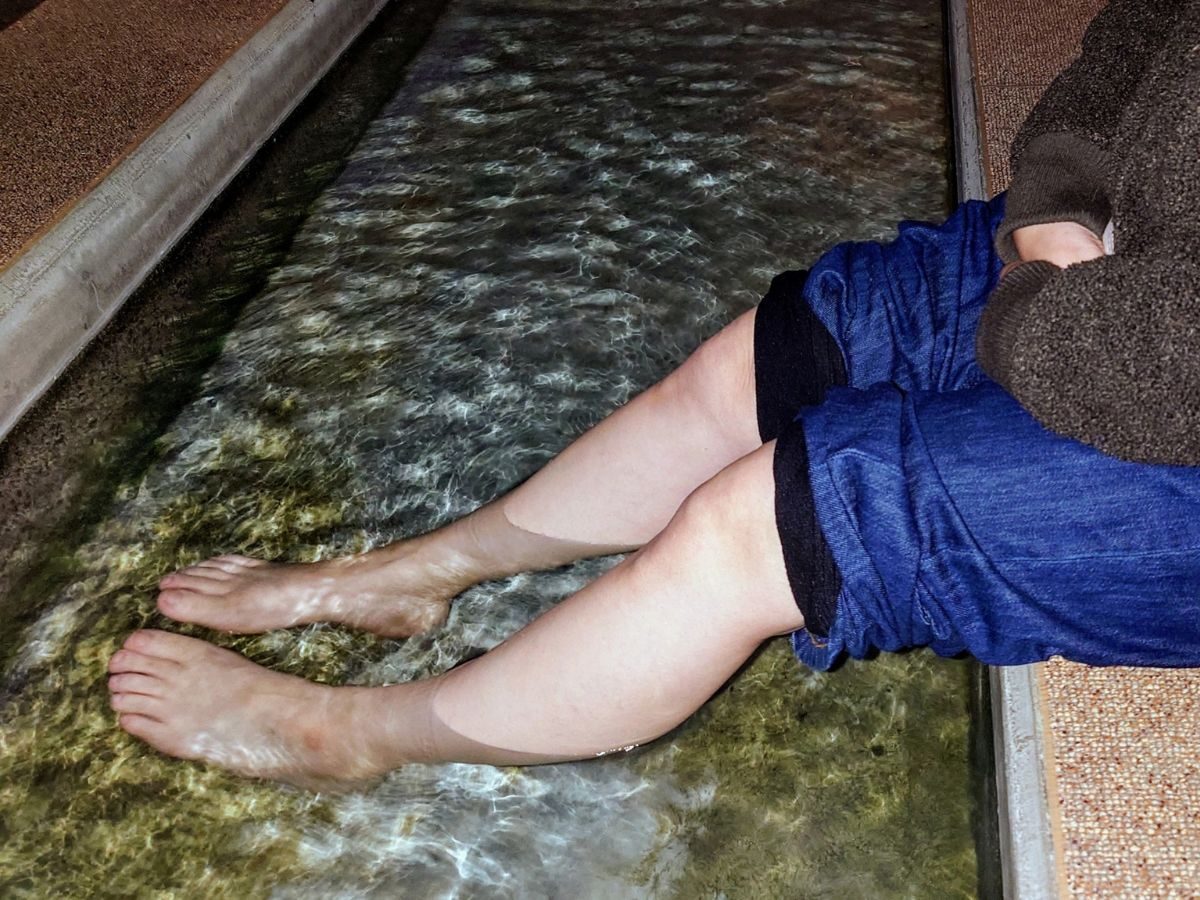
Soaking your feet in hot water can increase blood flow and improve skin sensation. Many people with numbness in their feet also experience constant coldness, regardless of the weather or whether they wear socks. This could be a sign of poor blood circulation, leading to numbness, tingling, and a cold, damp feeling in the feet. Therefore, I recommend that those experiencing neuropathy or similar symptoms soak their feet.
Prepare a bucket of hot water (at 100 degrees) with Epsom salt. Epsom salt contains magnesium that is absorbed through the skin, increasing blood flow and softening the tissue of your feet. Soaking your feet for about 20 minutes every day will provide these benefits and enhance the sensation in your feet.
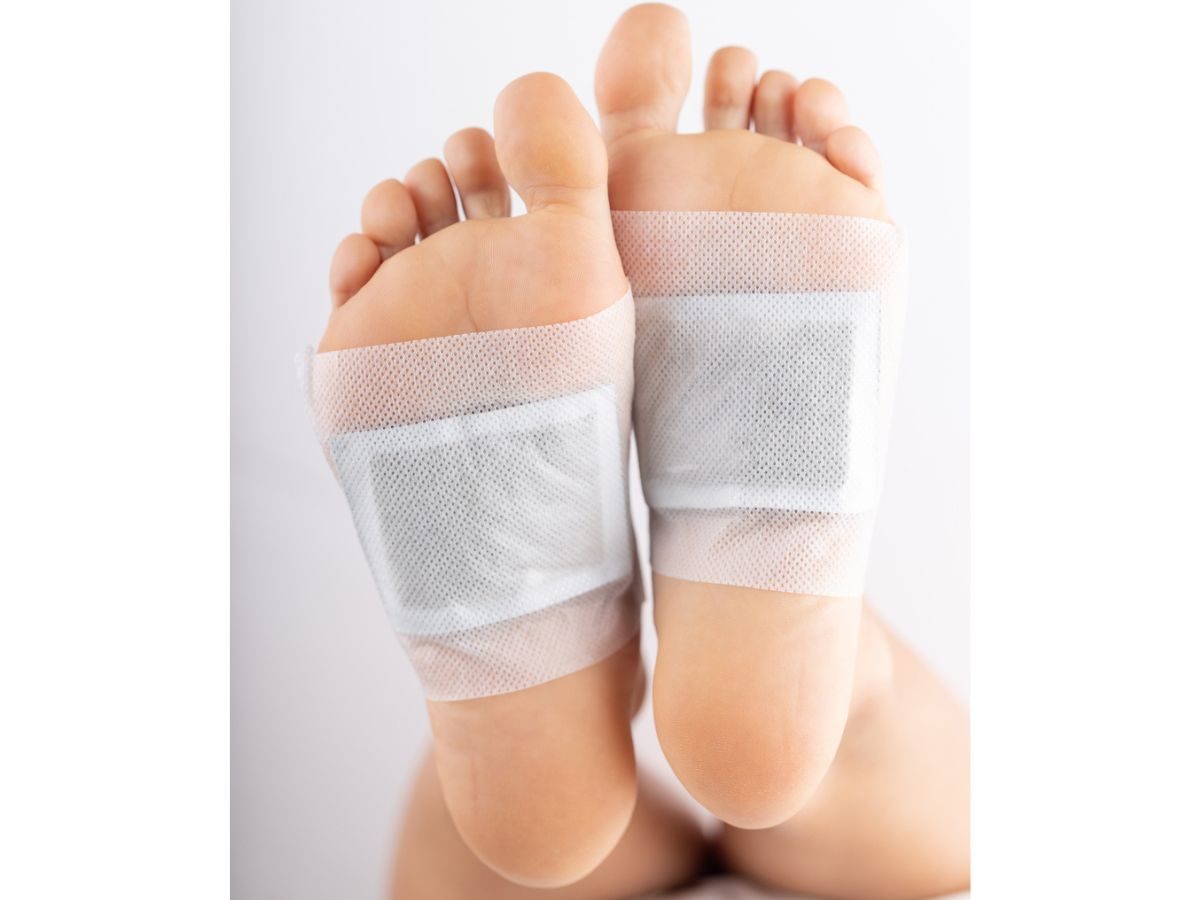
One of the reasons for neuropathy is exposure to toxins like heavy metals and chemicals. So, you can use detox foot patches at night while you are sleeping. Inside the patch, there are herbs, including Bamboo, Ginger, tourmaline, and lavender, which may help with pain and sleep quality.
Detox foot pads are meant to be stuck on the bottom of your feet overnight to draw out toxins, like heavy metals. When you remove the pad in the morning, its darkened appearance is said to reflect the toxins removed from your body.
*However, no scientific studies prove that detox foot pads work. In fact, the Federal Trade Commission has charged some distributors with deceptive advertising.
I’d like to share how you can improve sensation in your hands and feet affected by neuropathy using a toothpick. The technique I use is known as the “Fukuda-Abo theory,” which involves Jing-well acupuncture. In Japan, doctors utilize needles at Jing-well points to treat their patients, often incorporating bloodletting as part of the process. However, a doctor named Dr. Nagata later discovered that it is not necessary to insert needles into the Jing-well points; instead, simply pricking these points can yield the same benefits, including relief from neuropathy. This method is referred to as the Prickling Neuro-Stimulation Technique. For more info, https://hariqacupuncture.com/how-to-use-a-toothpick-to-help-your-neuropathy/
Performing these 4 step neuropathy exercises can help speed up your healing process and alleviate numbness and tingling on your feet. If you are still experiencing trouble with your foot sensation, you may want to consider alternative treatments, such as acupuncture, to expedite the recovery process.
We'll be happy to answer your questions.
Yes. Acupuncture is very effective for neuropathy. We examined your foot sensation during the initial acupuncture session. The treatments focused on increasing blood circulation and inducing the sensation. Acupuncture has been shown in many studies to be incredibly practical in increasing the sensory nerve due to its ability to stimulate the body to release its natural painkillers.
As a general rule of thumb, the sooner one receives treatment, the better the prognosis. Some patients come for neuropathy treatment months or even years after the initial onset, and these chronic cases are often more complex and take a much longer time to achieve results. Even then, recovery is not guaranteed.
Regarding the frequency of treatments, Acupuncture follows a simple rule. Acute and relatively new conditions are most effectively treated with more frequent visits, whereas chronic and old conditions can benefit from more widespread treatments. In other words, if you just had an onset of neuropathy, you will probably be prescribed 2-3 treatments per week in order to get the most effective results, and chronic cases will generally come in only once a week.
If you or a loved one was diagnosed with neuropathy and want to learn more about acupuncture and whether it’s appropriate for your case, send us a message through our contact page. Thank you for taking the time to read this blog post! I appreciate your interest and hope to see you again for future posts.
We understand this can be a lot of information and overwhelming: if you are looking for more support and answers, set up a free consultation with our neuropathy Specialist, Satoru Ozawa. Share your story, get your questions answered, and learn how you can set yourself up for tremendous success in achieving a healthy life.
The following blogs discuss natural remedies, acupuncture, Chinese medicine, Chinese herbs, and tips for maintaining good health.
I’d like to share some simple self-stretching techniques for chronic lower back pain, one of the most common and frustrating issues affecting people of all ages, from...
I would like to share with you what you can do with 5 TIPS and how to manage one of the most annoying conditions: tinnitus or ringing...
A 45-year-old man came to my clinic looking for some relief from the ringing in ears because he discovered that acupuncture might be a great option to...

Satoru Ozawa, L.Ac, ATC
hariQ acupuncture & herbs
Licensed acupuncturist, Certified Athletic Trainer and Chinese herbal specialist. With his 10 years of experience in Oriental Medicine, he will recommend the best natural Remedies, including Acupuncture, Chinese herbs, and health tips to relieve your suffering.
This information is very good and informative for a well being, please keep it up.. thanks